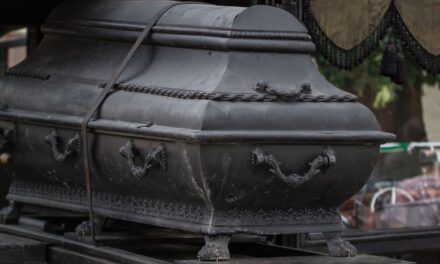They can run very fast, it is not worth running away from them.
So far this year, 65 calves have been born in the popular ecotourism attraction of the Balaton Upland National Park Administration, in the Kápolnapusztai Buffalo Reserve.
According to an article published on the park's website, in addition to the two bulls named Vércse and Balaton, 79 buffalo cows and their calves await visitors in the visitor center in the Kis-Balaton attraction even during the fall. All of them introduced themselves to the representatives of the press at the unusual press conference held on Wednesday.
We have reached the end of the calving period, the animals will be in the pasture for another two weeks, and then we will turn them in so that the pasture can regenerate as well. The animals only feed in the meadow throughout the summer, and then at the beginning of November we drive them into the paddock, where they get hay
- said Ottó Dér, the operator of the Kápolnapusztai Buffalo Reserve of the Balaton Upland National Park Administration, while the journalists' jeep was humming lightly in the pouring rain on the pasture closed to pedestrian traffic.
In the pasture, the buffalo calves rested in the grass by twos and fours, in the so-called "nursery". The cows left them in a pile. While the mother animal grazes, she watches the movements of her little one and the events around her with one eye and with every inch of her being. If he notices something unusual, he rushes to the foals with a loud roar to protect them from the "lurking danger" with the help of his herdmates and all their body surfaces.
Currently, 65 calves enjoy this kind of maternal care in that part of the almost 100-hectare area, which visitors can observe outside the fence, or even inside. The latter can of course be done under the supervision of professionals.
They can run very fast, it is not worth running away from them
- warned Zsolt Bende, the director of the Balaton-Felvídeki National Park Administration, who talked about the expansion of the livestock and his plans in the area, which has already received almost 30 thousand visitors this year, on the jeep's trailer, which provides comfortable viewing.
As he said, the domestic buffalo is a native, Hungarian breed of animal that they must manage well.
"Preserving its gene pool is one of the tasks of the National Park. We make sure that the most beautiful and the best are always able to reproduce, so that we have the most beautiful and better stock. We consider it important to screen for genetic diseases and prevent their transmission," said the director.
He added: in addition to the gray cattle, the buffalo has become an "ecotype" in the Carpathian Basin, meaning that it has adapted very well to the environment.
Land management is one of the cornerstones of the Balaton Upland National Park. I feel it is a very important task that the number of animals, which has decreased in recent years, can increase several times. In the Carpathian Basin, a habitat is the most diverse, i.e. the most diverse, if there are grazing animals that trample, graze, and fertilize the land.
In the wake of his feet, other types of plants also appear, but only the plants that can withstand chewing can survive. It can "open up" overgrown and wooded areas. With its manure, it binds insects to the area, it can turn an invasive weed sea into a big lawn
- explained Zsolt Bende. He drew attention to the high diversity of wooded pastures, where native tree species can also be found, with associated insects, other animal species and plants also appearing. He compared the diversity of woody pastures to the diversity of rainforests.
He considers it important to treat as many animals as possible in as large an area as possible, because this is how we will achieve our goal of having more and more valuable and diverse areas. In Kápolnapuszta, after significant selection work in recent years, they are trying to increase the number of animals. I want to max out at 120 individuals.
Kápolnapuszta is the largest herd of buffalo that can be visited in Hungary
The Buffalo Reserve fulfills three goals. It presents breeds that are native to our country, assumes a significant role in gene and breed preservation, and also performs important activities in terms of the management of the area. The priority task of the Balaton-felvidéki Nemzet Park Directorate is the genetic preservation of indigenous domestic animals.
The buffalo almost disappeared from Hungary in the early 1990s - due to the decline of its economic role. The descendants of the buffalo herds of the former lordships of North Somogyi are believed to have survived in the area of Little Balaton. The Kápolnapuszta herd was the basis for saving the breed. With the development of the herd, a new possibility for the survival of the domestic buffalo herd opened up.
The Balaton-felvidéki National Park Administration also plays a key role in saving the breed.
The culture of its breeding in Hungary goes back more than 400 years. He mostly served as a train driver. Its carrying capacity is one and a half times greater than that of cattle and is less demanding, so keeping it requires less work and care. It can be kept on pasture from spring to late autumn, which fully meets its needs. He likes to spend the summer in a habitat where he has the opportunity to dive into the water. The otherwise benevolent animal was gladly used for pulling and breaking up farmland. Their meat is also eaten and cheese specialties such as mozzarella are made from its milk.
Colorful Countryside
Featured image: Bernadett Turbéki / BfNPI












